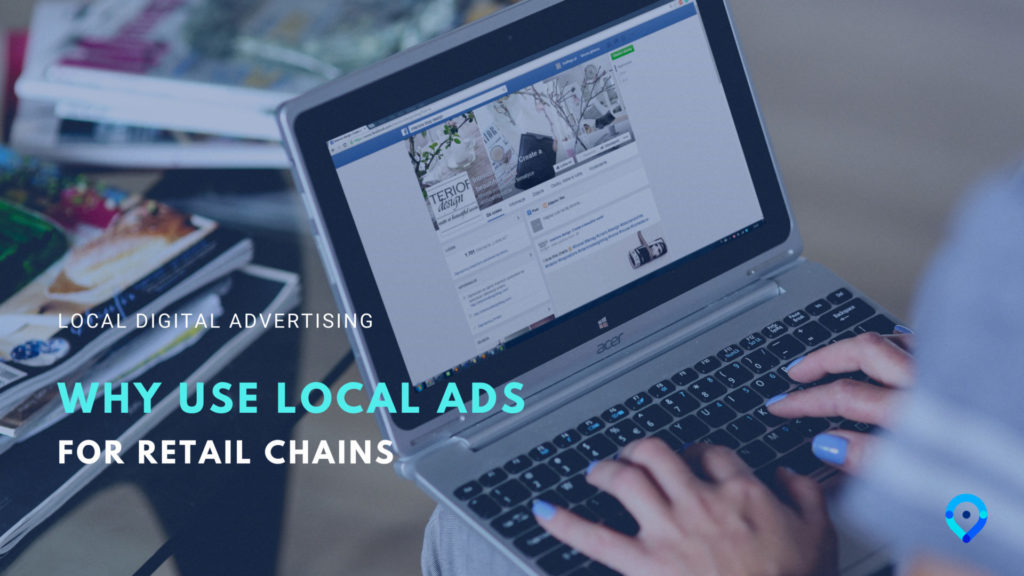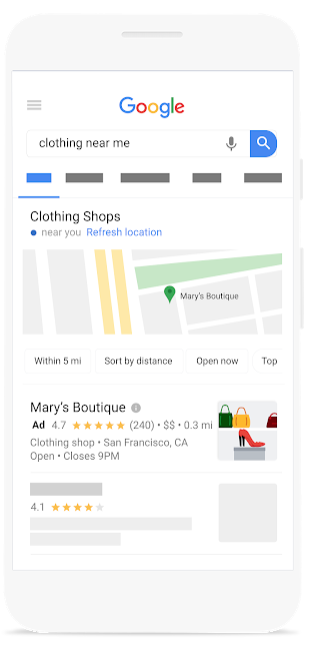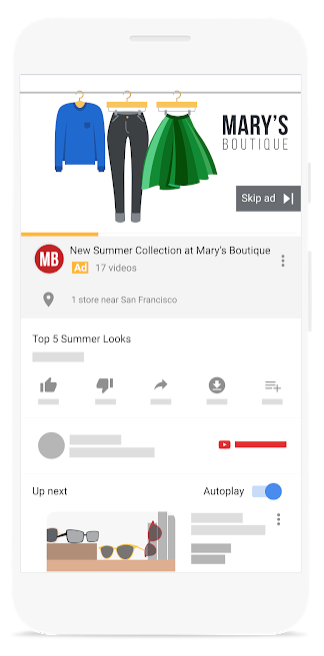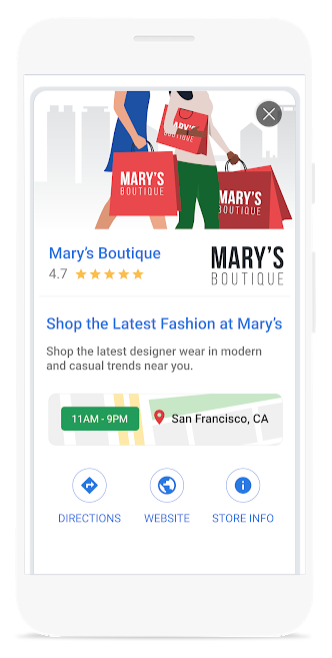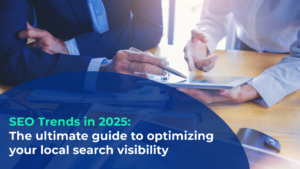“Local ads” are extremely powerful ad formats for retail networks. This format allows physical stores to promote their products or services in a geographic area around the points of sale. The magic of this format is that an ad will be on the digital platforms at the best of times: when the prospect nearby is looking for a store of your type or a specific service/product that you offer.
In this article, discover:
- What are local ads
- The roles around local ads
- The local ads tools
- The mistakes to avoid during a local ad campaign
- Indicators to follow for a good local ad campaign
1. What are local ads
A local advertisement consists of doing digital promotion of your store in a geographical area around it. The campaign ensures that the most important information (name, address, timetables, images,..) of your brand is automatically displayed on the digital platforms of your potential customers located nearby.
The goal of local ads is to attract the customer to the point of sale. This strategy is called “Web-to-store” and consists of optimizing the online visibility of its points of sale on the largest media to encourage in-store visits (for more information, see our article on the subject). To do this, retailers must create local pages, on Facebook and Google for example, for each of their physical stores. Each advertising campaign will then be linked to the shop’s page.
A local ad is very useful for reaching potential customers as it increases the online visibility of the point(s) of sale. Reaching new customers is usually complicated. That’s why it makes sense to be on all major digital platforms like Facebook and Google. It is by being so present that a prospect will automatically associate the name of the brand with a specific product or service.
Overall, a local campaign allows companies to reach business goals by maximizing in-store visits.
2. The roles behind local ads
It is important to mention that the retail networks are composed of distinct levels: the headquarters, which represent the entire brand and the local, which represent all physical stores using the name of the company. These two entities obviously both have roles in setting up local campaigns.
- The headquarter has the role of monitoring all advertising campaigns posted by the local. It must ensure that all campaigns remain consistent and correspond to the brand’s image. To do this, the head office is advised to make available a library of pre-formatted advertisements that the local entities can then use easily to launch a campaign. The head office may also have the role of reporting campaigns to the points of sale.
- The local has the role of putting online local advertising campaigns for all interesting communications about their stores. For example, a store can communicate about promotions, new products, in-store events or collaborations. The local entities must be careful that all of their communications align with the image of the brand it represents. In addition, it must ensure that this communication does not interfere with that of another point of sale in the same network.
3. The local ads tools
There are several search engines and platforms that can create local ads like Google, Facebook, Microsoft Bing and others… The most relevant tools for retail networks are:
- Google: 3 Google products are involved in the creation of a local campaign: Google Search, Google Maps and Google Display. These tools will direct the prospect to the Google Maps interface and the Google My Business (GMB) point of sale page. This is done in order to provide as much information as possible to encourage in-store shopping. These tools also make it possible to adjust the auction prices according to the distance from the shop of the consumer. The key in these tools is to have the most complete and up-to-date GMB page possible. For more information, see our article “The benefits of Google local campaigns”
- Facebook: Facebook is an extremely powerful tool for creating local campaigns. Indeed, this platform offers the possibility to create advertisements in different formats but also with a high precision of audience targeting. Due to the nature of the platform, Facebook has managed to collect a very large amount of user data. So it allows companies to target the audience in a very specific way. The tool is generally very useful for companies that are familiar with the profile of their customers. For more information, see our article “What are the benefits of Facebook ads for retail chains?”

4. The mistakes to avoid during a local ad campaign
Due to the separation of roles around local campaigns it is sometimes difficult to manage all communications. Indeed, the more stores there are, the more you need to communicate between entities to avoid “stepping on it”. The risk is that the head office runs a general campaign and that it competes with the campaign of a point of sale. We refer to this as “cannibalization” of campaigns.
This phenomenon is increased for companies with a separation between their national and regional headquarters. In addition to the point-of-sale and regional head office campaigns, consideration should also be given to those launched by the national head office.
In case of “cannibalization”, the point of sale will lose money because the local campaign is ineffective. But not only! The cost of the campaign publication will also increase as the price of the auction for advertising placements will do the same due to the strong competition on keywords related to the campaign of the headquarters set up in parallel.
To avoid this situation, several things need to be done:
- Ensure good communication between the headquarter(s) and the local entities. First, must define the messages that will be carried by each. The creation of a communication calendar for these different messages must then be created to allow good synchronization between them.
- Use the geolocation variables of the different platforms to create “catchment areas”. It is possible to exclude geographic areas where the campaign will not be communicated. The campaigns will therefore be mutually exclusive.
5. Indicators to follow for a good local ad campaign
It is obviously important to measure the results of each campaign in order to understand the impact of the different decisions and variables. The goal is to continuously improve the results.
There are the standard basic indicators:
- Impressions: Indicates the number of times the ad shown on a page.
- Clicks: indicates the number of times the ad has been clicked.
- CPC or “cost per click”: indicates the average cost per click on a local ad. Platforms offer automation of the CPC to optimize this cost. For example, there is the option on Google to put the CPC in “enhanced” mode.
- CTR or “click-through rate”: indicates the percentage of people who saw the ad versus the number of clicks on it.
- CPM or “cost per mille” or “cost per thousand”: simply indicates the average cost for 1000 impressions
With regard to specialized retail chains indicators, the tools are different for each platform. For Google there is the possibility to use Store Visit and Store Sales which are particularly useful tools for reporting strategy “o2o” or “online to offline” (for more information, see our article “What is O2O traffic?”). As far as Facebook is concerned, reporting campaigns with a “point-of-sale traffic” strategy will give all the interesting figures for a physical point-of-sale.
It is suggested to experiment with your campaigns. Indeed, the format, the visual, the budget and other variables will have a significant impact on the results. In addition, it all depends on the objective of this one. Experimentation will help you identify what is best for your retail network.
Consult other articles on the subject…
